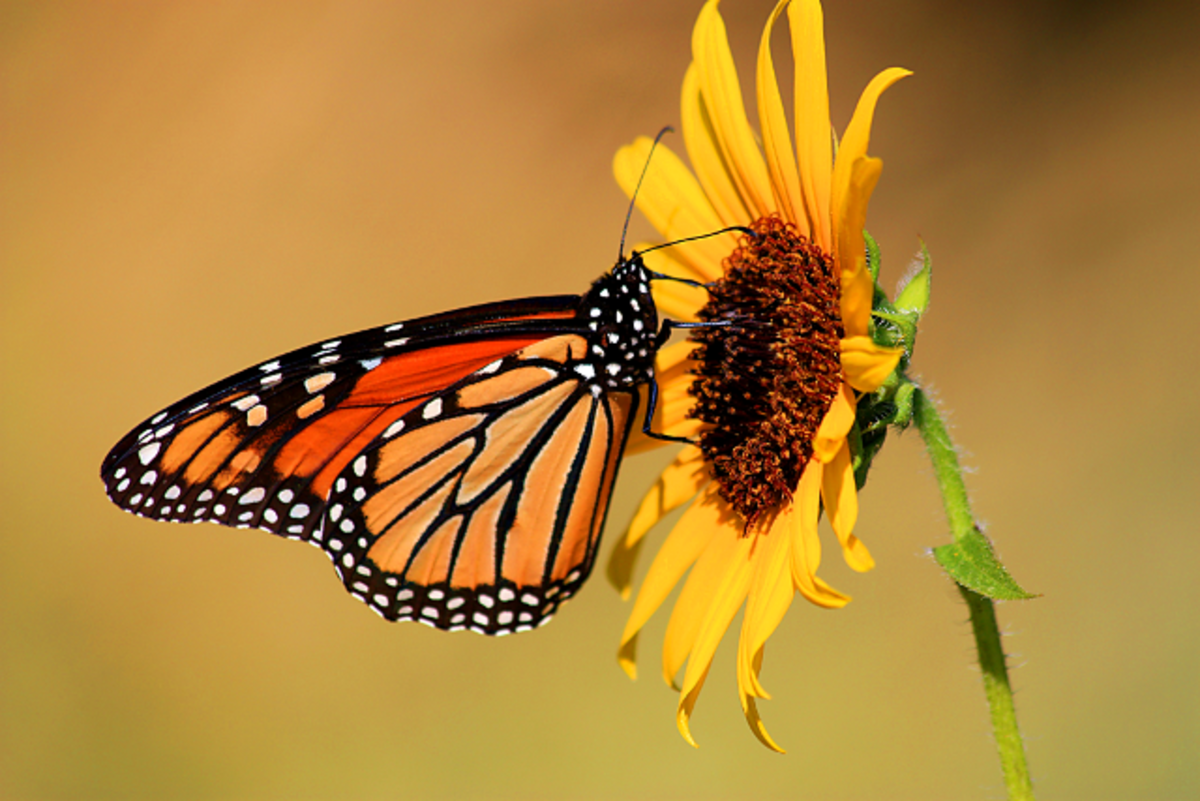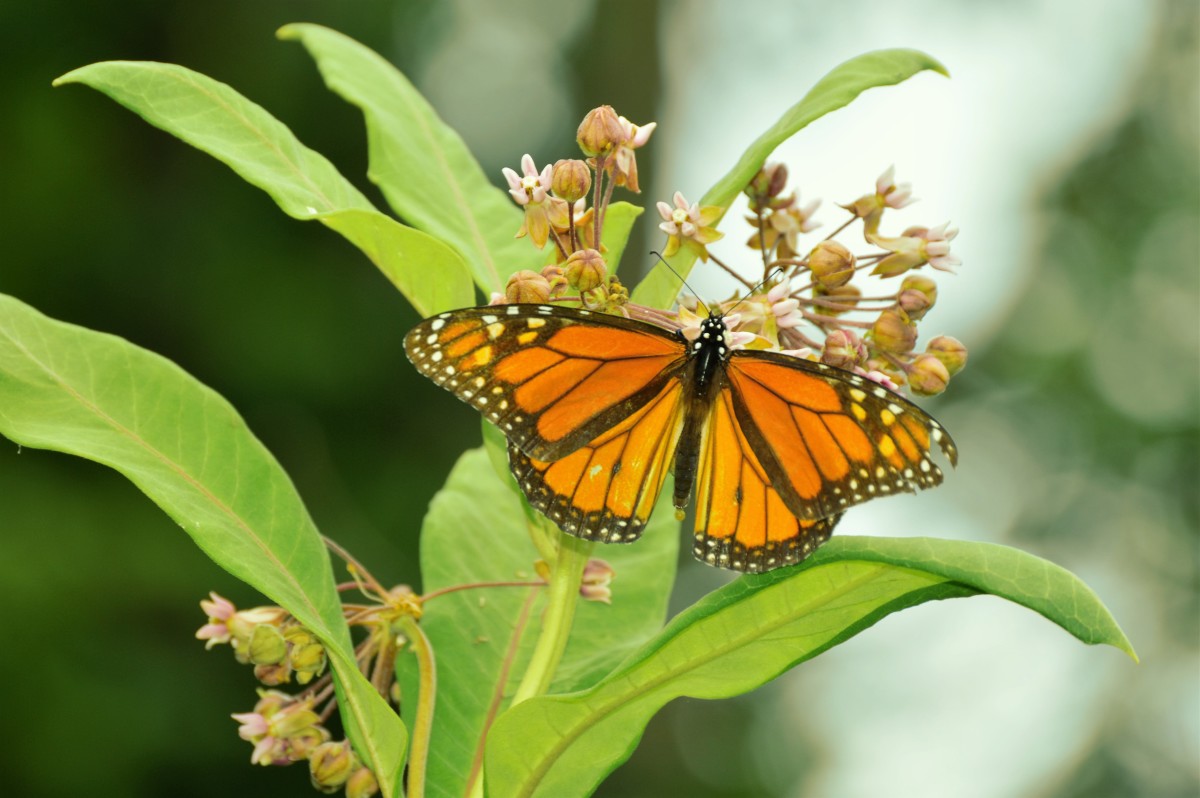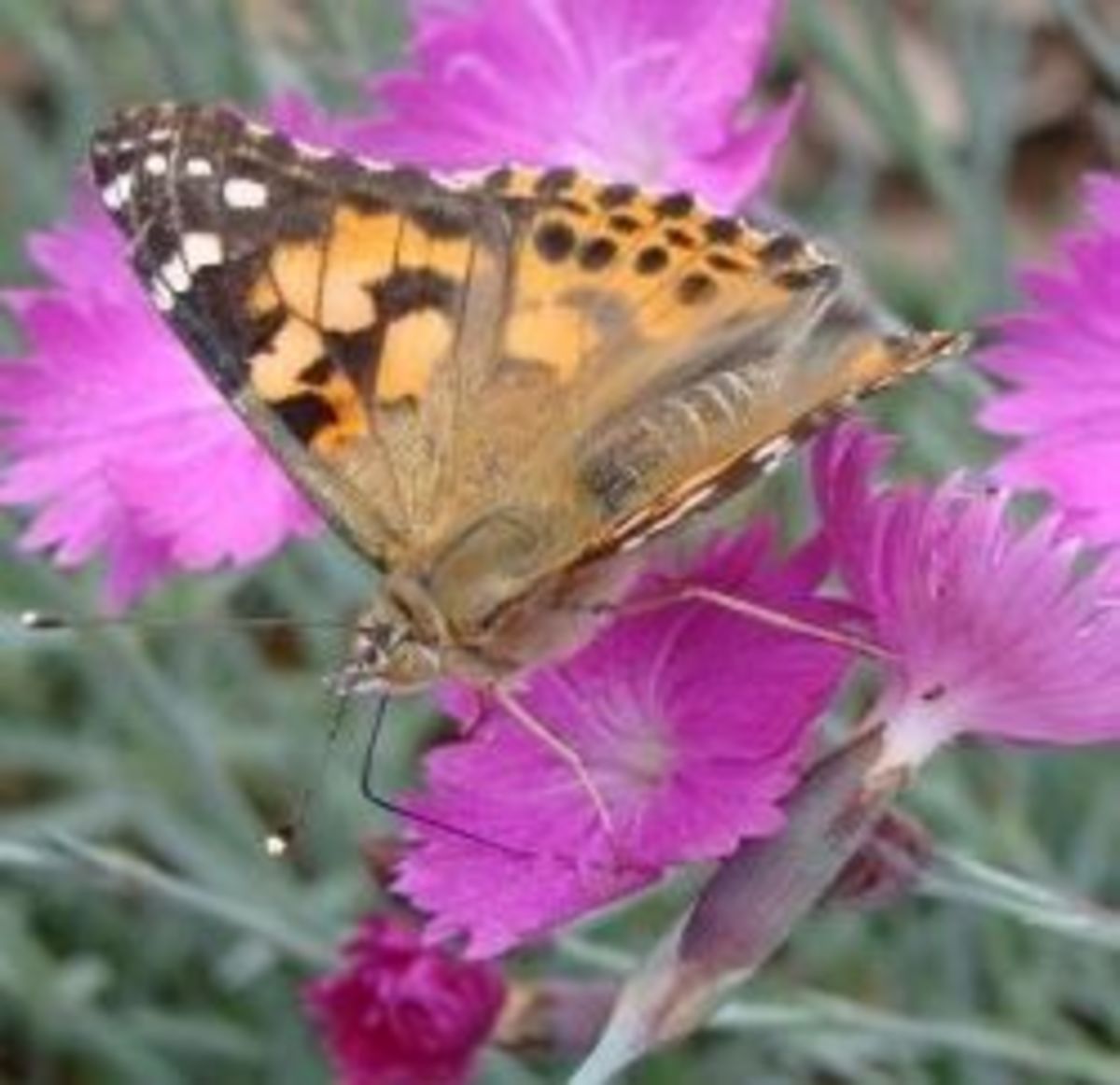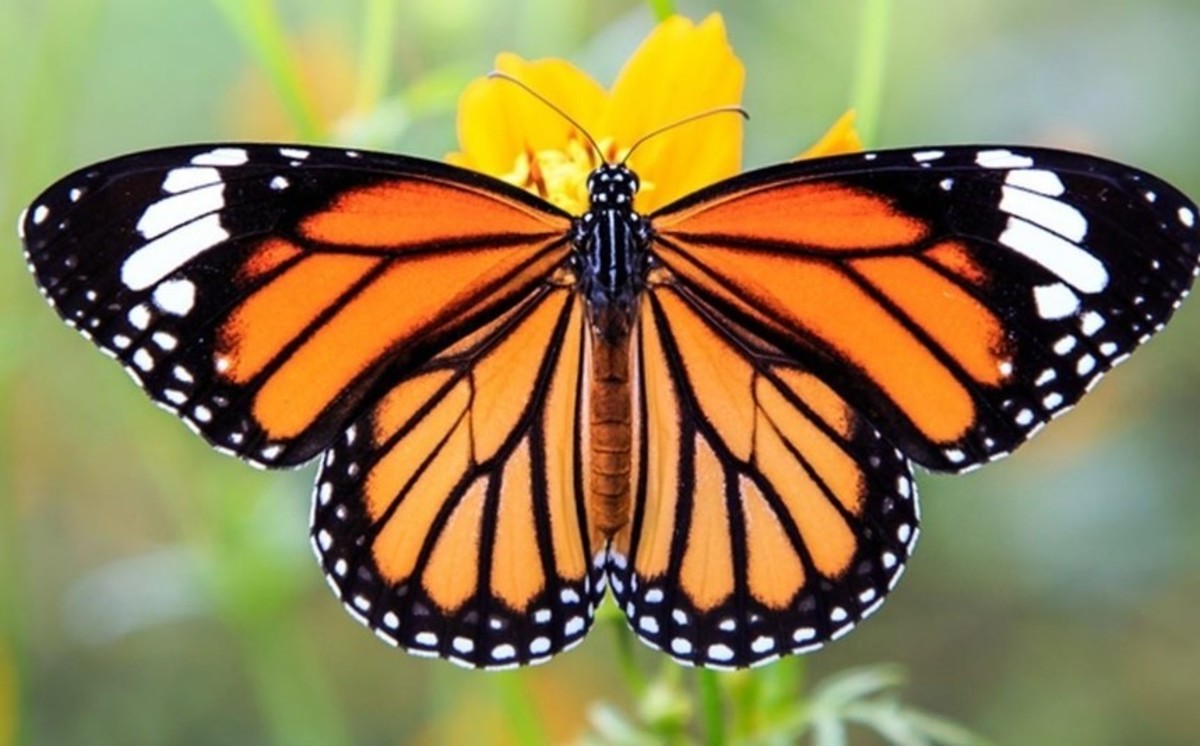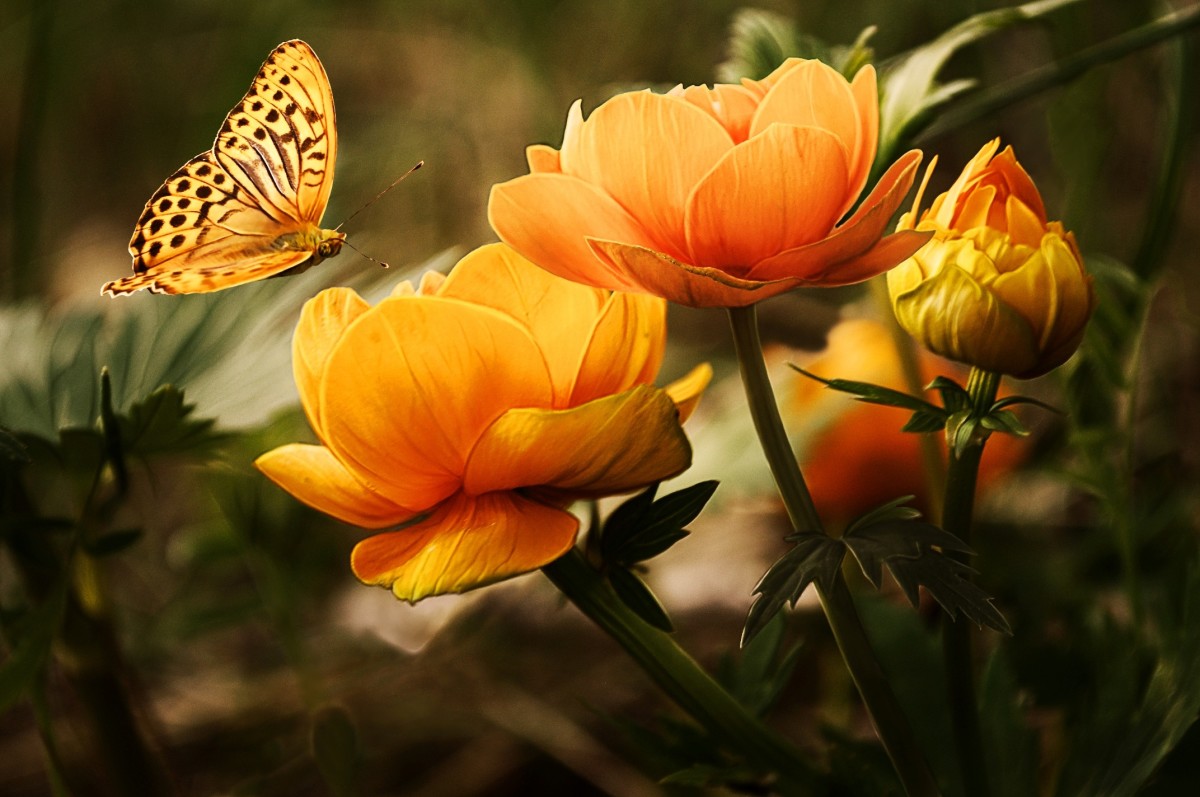- HubPages»
- Education and Science»
- Life Sciences»
- Entomology»
- Insects & Bugs
Butterflies - Winged Wonders - A Gift of Nature
I have entomophobia. It is caused by bugs. But don’t worry. It is nothing serious. Entomophobia is the fear of bugs. Yet, I am not afraid of butterflies, ladybugs, grasshoppers and praying mantis
And on occasion, when I have to be brave for my kids I can catch a spider and I will always try to release it to a safe place outdoors so the spider can go after the multiude of other bugs I fear.
As springtime nears and the great outdoors beckons warm weather, chirping birds, and blooming flowers, natures beauty reawakens. Butterflies are welcome part of warm weather. Many people just think of butterflies as something beautiful, and underestimate the important role they play in the balance of nature. Butterflies are amazing and following is a compilation of the amazing things about butterflies:
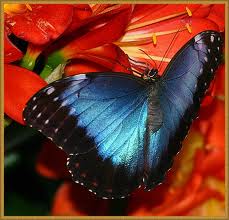
- Long ago, the butterfly was called a ‘butter-colored-fly’, which described a common yellow European butterfly.
- Butterflies are known scientifically in the category or species order as Lepidoptera, meaning scaled wings. Butterflies and moths are the only insects that have scales. The scales overlap like shingles on the top of a house that cover a thin, clear, cellophane like wing
- Butterflies carry pollen from plant to plant.
- A caterpillar is the immature or larval stage of the insect and it is the caterpillar, that is the bottom of the food chain, helping to feed all the other species.
- Butterflies exist in every part of the world, except the very hottest and very coldest regions of the globe.
- More butterflies live in tropical areas than anywhere else. Probably due to the selection of plants for caterpillars to munch on. Many plants also produce an abundance of nectar for the butterflies benefit.
- Tropical butterflies live the longest. Some live almost up to a year. Butterflies in moderate climates live an average of up to a few months, and some areas only for a few weeks. In some areas, it may only be a few hours.
- In the 1800’s butterfly collecting was very popular.
- You can plant garden specific plants that will attract butterflies.
- There are 20,000 species of butterflies around the world.
- The largest butterfly is called the Queen Alexandra birdwing. Its wingspan is 11 inches. It has a bigger wingspan than many birds
- The smallest butterfly is called the Small Blue and measures less than 1 inch from wing tip to wing tip and can fit on top of a person’s nose.
- The average butterfly wingspan measures about 1-2 inches.
- Every butterfly is unique. No two, even in the same species are exactly the same.
- The most colorful butterflies are usually male. Females tend to be duller and blend into the surrounding more. This is actually beneficial, as it protects them from predators when the females are laying their eggs.
- butterflies smell with their antennae to find nectar. Males also use their antennae to smell the scent of females. They use their scent of smell through chemoreceptors at the end of their antennas.
- butterflies taste with their feet. When a butterfly lands on a flower, it uses its tarsi, the feet, as receptors to discern if this is a good flower to draw nectar from.
- They drink nectar from a straw like tube attached to their heads called a proboscis. They use this to probe dep into the flower to reach the nectar.
- The colors that make up a butterfly help attract the opposite sex, ward off the enemy, and camaflouge them for safety.
- Butterflys are cold blooded and spread their wings in the sun to soak up warmth.
- some butterflies can fly up to speeds of 24 miles per hour
butterfly fossils have been found dating back to the time of dinosaurs during the Mesozoic Era, about 230 to 63 million years ago. The oldest caterpillar fossils can be traced back 100 million years.
- at night and in bad weather butterflies sleep between blades of grasses, on the under side of leaves, in crevices of rocks for shelter.
The Metamorphosis of the Butterfly Brings About a Great Transformation
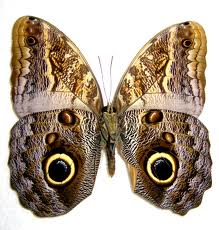
Blue Morpho Butterfly
The Owl Butterfly has Spots that Look Like Owl's Eyes
Some of the butterfly’s enemies include spiders, lizards, and monkeys. Birds are the main predator of butterflies. They can attack the insect in the air and on the ground. Nature designed butterlies with natural defense systems. Most caterpillars and butterflies can blend in with their environment. Some can make themselve look like bad tasting insects and some are even toxic The Blue Morpho uses its shiny wings to startle their predators, giving the butterfly enough time to fly away. . Some have a bad smell that chases a predator away. Some have large spots on their wings that may look like a big animal to the attacker. One such butterfly called the Indian Leaf camaflouges themselves by blending in with the leaf on a tree, yet when their wings are open they are bright and colorful. Some butterflies that are not poisonous, use what is called mimicry to look like another butterly that is poisonous.
The owl butterfly of South America has eyespots on its wings that look like owl eyes. When the butterfly flaps its wings the eyes look like they are blinking and scares away small animals and birds who are scared of owls.
Homage to the Humble Butterfly
Monarch Butterflies Migrate Thousands of Miles
Monarch butterflies migrate thousands of miles from Canada and the north part of United States where they are born to fly south to Mexico for the winter. They can not survive in freezing temperatures and need a bit more moderate temperatures to reproduce. They begin their migration in mid August and fly about 25-30 miles per day, although with favorable wind and weather conditions, they can sometimes coast further. it takes about two to two and half months for the migration. In spring, they migrate north again. It is believed that some populations travel as much as 4,000 miles round trip. Monarchs that successfully migrate and last through the winter live to about 8-9 months and are believed to be the longer lived. In comparison the monarch butterflies that breed during the summer only live about 2-5 weeks as they attempt to reproduce. The numbers of Monarchs are measured by hectares which equals 2.47 acres of trees where the butterflies cluster in Mexico in December. In this decade the population has gone down significantly.
We Need to Protect and Preserve These Beautiful Creatures
Their wingspan measures 4 inches and airline pilots have reported seeing them fly as high as 29,000 feet in the air. Their migration is thought to be one of the most amazing natural phenomenoms in existence. The Monarch butterfly is common throughout North America and 8 states, N. Carolina, Illonois, West Virginia, Alabama, Minnestota, Vermont, Idaho, and Texas in the United States claim the Monarch butterfly as their state butterfly. The Monarch butterfly is running the risk of becoming endangered due to deforestation of its natural habitat in Mexico, and the affects of global warming. In the United Statesand Canada, the Monarch butterfly is suffering similar assaults due to genetically modified crops, and destruction of its habitat from overexpansion of roads and housing. In order ensure their survival Canada, the United States, and Mexico need to work together to ensure its survival. By protecting the habitats, we can ensure their ability to migrate and we can save the species.
Many butterflies have become extinct over the last 50 years. In the South and Central American rainforests, butterflies thrive. As these tropical rainforests disappear, so do species of butterflies, and many other of the world’s species of plants and animals. Lost forever is the beauty of these magnificient creatures and secrets of never to be discovered natural medicines and new food sources.
Butterflies play a crucial role in our delicate eco system. The next time you see one of these magnificient miracles of nature flutter by, admire and appreciate them, for they may hold the future of our world in their wings.
The British Museum of Natural History has the largest butterfly collection in the world with more than 2 million specimens.
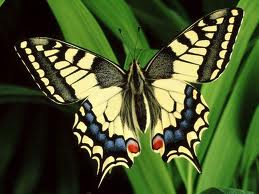
Admire and Appreciate these Winged Wonders
Butterflies play a crucial role in our delicate eco system. The next time you see one of these magnificient miracles of nature flutter by, admire and appreciate them, for they may hold the future of our world in their wings.
Learn More About the Monarch Butterfly from Peggy W
- Butterflies galore in Houston, Texas
Houston, Texas is generally a mild climate where one can see various butterflies year round especially if one has planted vegetation that attracts them. But where does one go to see exotic butterflies...

